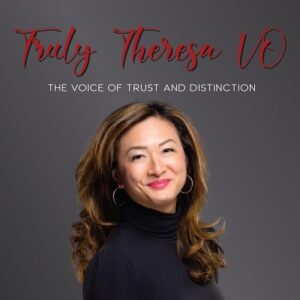As we celebrate Black History Month, I thought that it would be the right time to address the topic of diversity in voice over. As a person of color and a woman myself, this is a topic that is of great interest and importance to me and so many others.
What is Diversity?
When I use the term diversity, I am referring to different ethnicities, skin color, genders, ages, cultures, sexual orientations, etc.
Voices of the Past and of the Future
It was not that long ago that the majority of voice roles went to Caucasian men. You would almost never hear a woman doing radio or TV promo work, movie trailers, etc., but these days, female voices are increasingly being used for this genre of voice work. The same goes with voices of different ethnicities and accents.
The world has become a more open place, in our hearts and minds, and this is being reflected in the changing landscape of voice over. We are all consumers, and we all want to see and hear people who we can relate to, represented and reflected, in all forms of media.
Authenticity in Casting
There is so much more diversity in casting than ever before. When they are casting for ethnic roles, for example, the casting specs often ask for authentic accents and people who are from that ethnic background. Or perhaps it may be for a role that is asking for a specific sexual orientation, and they do not want people auditioning if they don’t identify with these groups. There is a growing casting trend for the real thing. It’s about authenticity, but also about diverse representation. There is now a big demand for the inclusion of all types of people.
The topic of casting authentic BIPOC voices can sometimes ensue with a heated discussion. Some voice actors say that everyone should be able to voice any role because as voice actors, we should be able to portray any character because no one sees the color of our skin. It’s just the voice, right? While it is true that we are actors and can “play” different characters, let’s not forget that there is a backstory that people of a different gender, ethnicity and age, etc. may not get if they are not part of that specific group.
The Changing Landscape
We are even seeing more and more demand for real children in voice over. Sure, some adults can sound like children, but do they really sound like REAL children? They don’t really. They just don’t have the same speaking patterns and way of seeing the world as a child does. And these are elements that will come across in a read.
Every voice over conference that I have attended in the past couple of years has had a Diversity Panel to discuss this very important topic and how the industry is shifting in terms of casting. I think that it’s great that these discussions are being had, and if these panels and topics exist, it means that there is a need for it.
Different Cultures
Mainstream media is not only accepting, but finally embracing diversity in all forms. More and more we are seeing and hearing from people of all types of cultures, ethnicities, genders, sexual orientation, ages, etc. The popularity of Squid Games on Netflix, Encanto on Disney +, Queer Eye on Netflix, etc. demonstrates that the general population wants this diversity and inclusion.
Promoting Diversity in Voice Over
There are some fantastic initiatives promoting diverse voices, including the PMG (People of the Global Majority) VO List and Voices of Color. These are resources open to anyone looking to cast diverse voice actors and also to find ethnically diverse voice over coaches.
These initiatives promote people who have been historically underrepresented, even though they represent the global majority. The glass ceiling may be invisible, but it’s a real as concrete and has affected women, people of color and members of the LGBTQIA2S+ community. And thus, the reason that we need to try to balance things out. It’s not about reverse discrimination, it’s about equality for all.
How Do We Get There?
To create more diversity and inclusion for everyone, we need to see diversity in all professions, from the creators, the casting directors, the writers, the advertisement executives, the corporate leaders and beyond.
It’s not just the world of voice over that is recognizing the need for more diversity. Doing a quick search on the internet will find you job titles like Chief Diversity Officer, Diversity Recruiter, Diversity and Inclusion Advocate and Inclusion Specialist.
While the discussion of diversity may be uncomfortable for some people, it’s an important one that we must continue to have. Diversity and inclusion are not about making it more difficult for one group of people to succeed, but instead about creating an openness so that it will eventually be an even playing ground for everyone.
